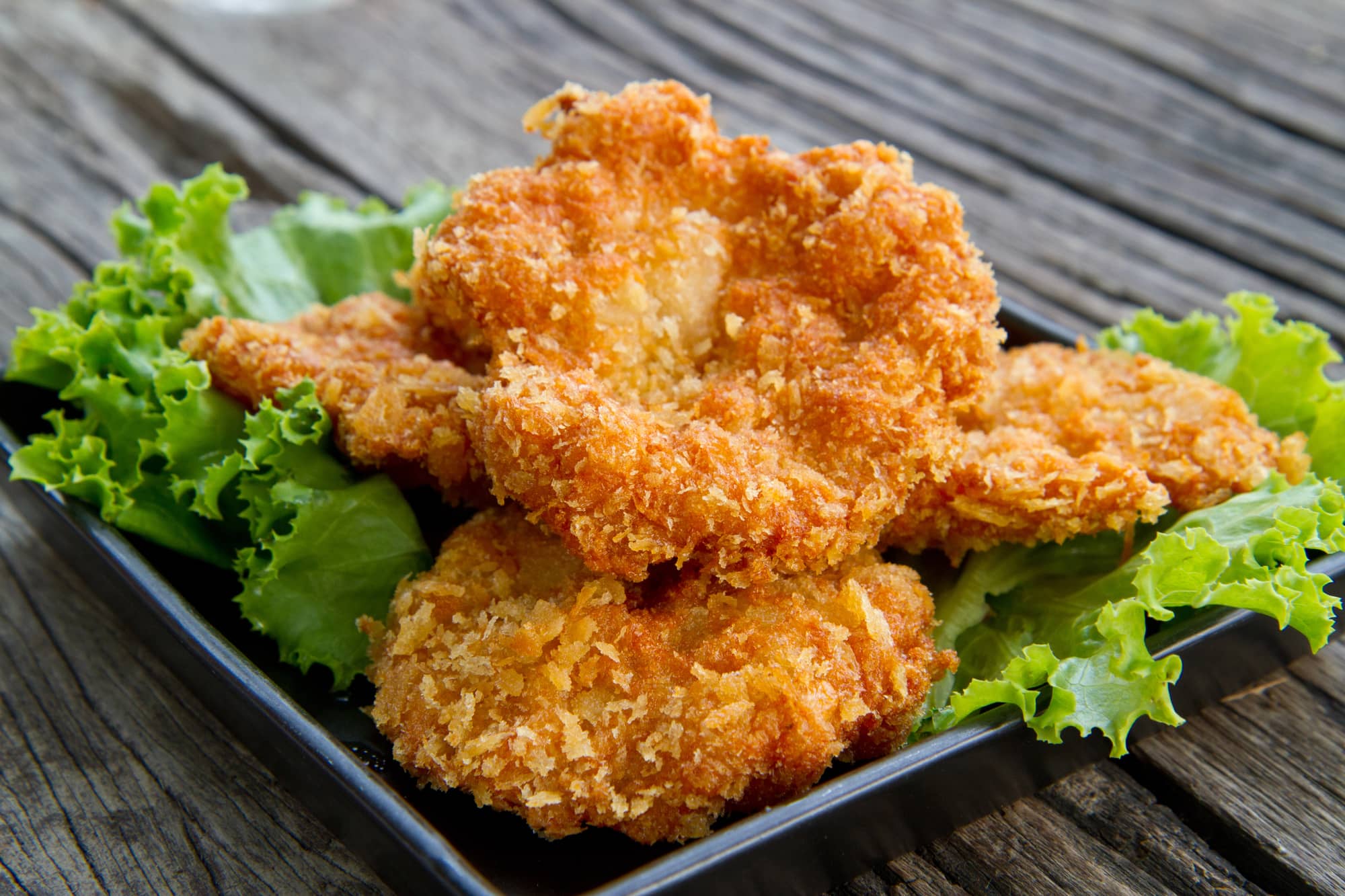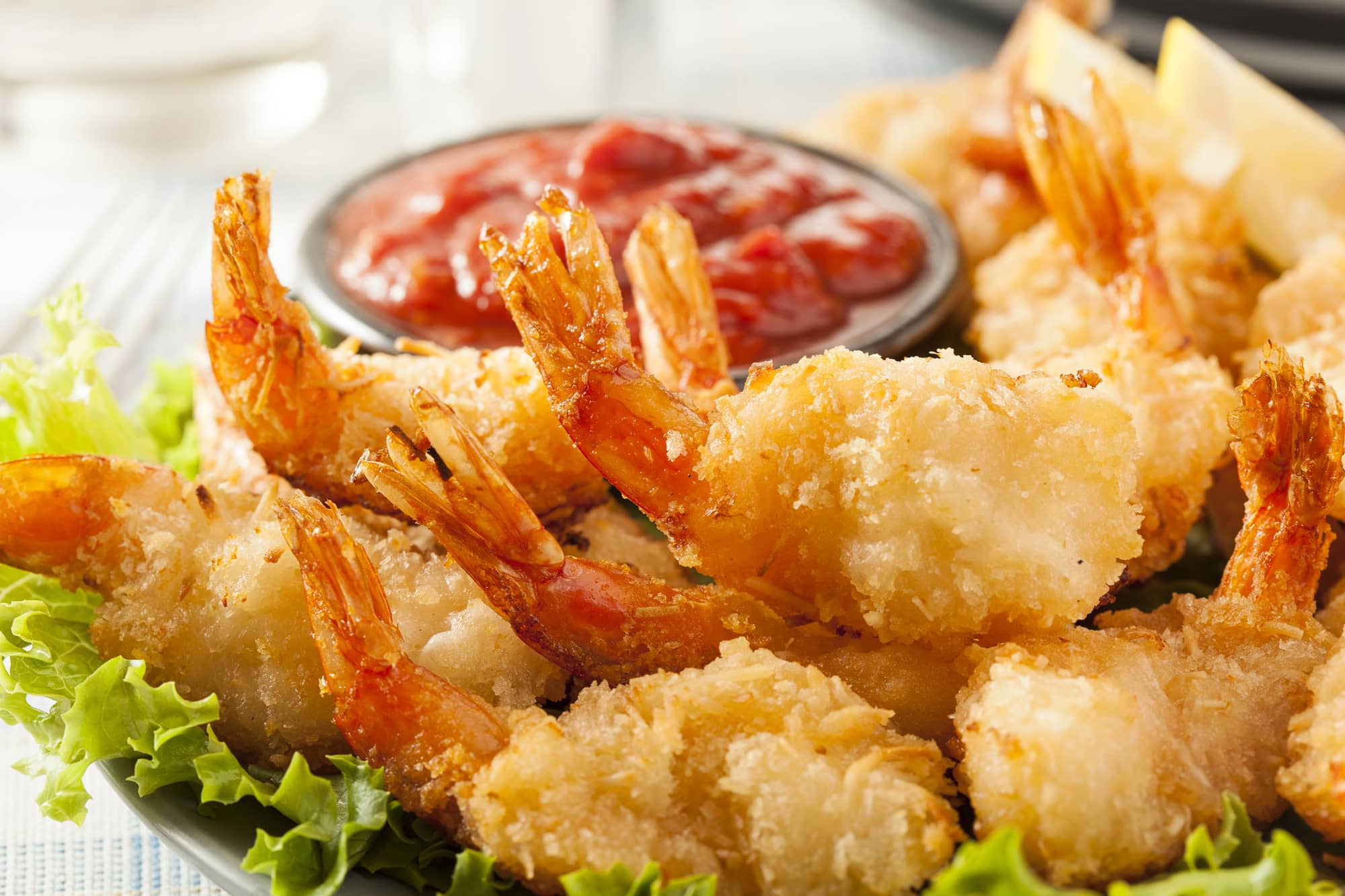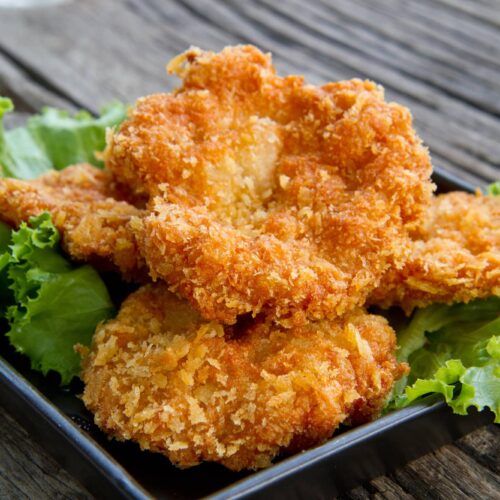
Coconut shrimp is a delightful dish that combines the tropical sweetness of coconut with the savory taste of shrimp, creating a flavor explosion that’s perfect for any occasion. Traditionally deep-fried, coconut shrimp can be quite rich and heavy. However, with the advent of the air fryer, you can achieve that same crispy texture while significantly reducing the amount of oil used.
Why Cook Coconut Shrimp With an Air Fryer?
Using an air fryer to make coconut shrimp comes with several significant benefits that make it a preferred method for many home cooks:
Healthier Cooking
One of the biggest advantages of an air fryer is its ability to produce crispy food with minimal oil. Traditional frying requires submerging food in hot oil, which can lead to a greasy finish and excess calories. An air fryer, on the other hand, circulates hot air around the food, creating that crispy texture while using only a fraction of the oil. This means you can indulge in your favorite coconut shrimp without the guilt! This is why it’s preferred by health-conscious individuals as well as people with strict dietary restrictions.
Improve Flavor and Texture
The air fryer provides a unique cooking environment that ensures even cooking and browning. The high-speed circulation of air allows the coconut to toast perfectly, enhancing its flavor while maintaining the shrimp’s juicy tenderness. The result is a deliciously crispy exterior with a moist and flavorful interior.
Quick and Convenient
Air fryers heat up quickly, allowing you to start cooking almost immediately. The cooking time for coconut shrimp is generally shorter than traditional frying, which means you can enjoy your dish faster. Additionally, air fryers often come with easy-to-clean components, making cleanup a breeze. The excess coconut crumbs are caught neatly at the bottom of the frying basket, so you only have to dump them out.
Versatility
Once you master air fryer coconut shrimp, you can use the same technique for other dishes. The air fryer is perfect for cooking vegetables, meats, and even desserts, making it a valuable kitchen appliance for any home cook.
What Are the Best Shrimp to Use for Coconut Shrimp?
Here are the key considerations to note when picking coconut shrimp:
Size Matters
Medium to Large Shrimp: The size of the shrimp can affect the overall texture and presentation of the dish. Medium to large shrimp work best as they provide a satisfying bite and hold up well during cooking. Larger shrimp, such as jumbo or colossal, can also be used for a more impressive presentation, though they may take longer to cook and are generally more expensive.
Fresh vs. Frozen
Fresh Shrimp: If you have access to fresh shrimp, it can be worth the investment. Fresh shrimp often have a sweeter flavor and firmer texture, enhancing the overall quality of your dish. Look for shrimp that have a slight ocean scent and a firm, translucent appearance. Some people have reservations about cleaning live shrimp, though. So you need to also keep this in mind.
Frozen Shrimp: Frozen shrimp are a convenient option and can be just as delicious as fresh. When purchasing frozen shrimp, choose those that are peeled and deveined for easy preparation. Always check for packaging that indicates the shrimp were flash-frozen to preserve freshness. Be mindful of the size as well because frozen shrimp will significantly shrink once cooked.
Sustainable Choices
Wild-Caught Shrimp: Whenever possible, opt for wild-caught shrimp. They are generally considered to be more flavorful and environmentally sustainable compared to farmed shrimp. Wild shrimp tend to have a firmer texture and a cleaner taste, making them ideal for dishes like coconut shrimp.
Farmed Shrimp: If you choose farmed shrimp, look for certifications such as the Best Aquaculture Practices (BAP) or the Marine Stewardship Council (MSC) seal. These certifications indicate responsible farming practices that prioritize environmental sustainability.
What Type of Coconut Should I Use for Air Fryer Coconut Shrimp?
The coconut plays a vital role in defining the flavor and texture of your coconut shrimp. Here’s what to consider when selecting coconut:
Unsweetened Shredded Coconut: For a more authentic coconut flavor, opt for unsweetened shredded coconut. It has a chewy texture and allows the natural sweetness of the shrimp to shine through. This type of coconut is often used in savory dishes and baked goods.
Sweetened Shredded Coconut: If you prefer a sweeter flavor profile, you can use sweetened shredded coconut. Keep in mind that this will add extra sugar to your dish, which might alter the overall taste. Skip this if you’re cooking large shrimp because the cooking time necessary to cook them will caramelize or burn the sugar. Sweetened coconut is better suited for desserts but can be used if you’re looking for a sweeter twist.
Coconut Flakes: Larger flakes of coconut can provide a different texture and visual appeal. Flaked coconut is great for creating a crunchy coating, but it may take slightly longer to cook than shredded coconut. Be sure to monitor the cooking process to prevent burning.
Toasted Coconut: For an extra layer of flavor, consider using toasted coconut. Toasting the coconut enhances its nuttiness and depth of flavor, making it a delicious addition to your coconut shrimp. You can toast shredded or flaked coconut in a dry skillet over medium heat until golden brown.
How To Prepare The Shrimp
Here’s a step-by-step guide to get your shrimp ready:
Step 1: Thaw Your Shrimp
If you’re using frozen shrimp, start by thawing them. The best method is to place them in the refrigerator overnight. If you need them thawed quickly, place the shrimp in a sealed plastic bag and submerge it in cold water for about 15-20 minutes. Avoid using hot water, as it can begin to cook the shrimp.
Step 2: Remove Shells and Devein
If your shrimp aren’t already peeled and deveined, you will have to do it on your own. To peel the shrimp, gently remove the shell, starting from the head end and working your way down. For deveining, use a small knife to make a shallow cut along the back of the shrimp and remove the dark vein with your fingers or a small tool. This step is essential for ensuring a pleasant eating experience.
Step 3: Pat Dry
Once your shrimp are cleaned, use paper towels to pat them dry. This helps remove excess moisture, which is important for ensuring the breading adheres properly. A dry surface will also help the shrimp crisp up nicely in the air fryer.
Step 4: Season the Shrimp
Seasoning is key to enhancing the flavor of the shrimp. In a bowl, sprinkle some salt, pepper, and any additional spices you desire, such as garlic powder or cayenne pepper. Toss the shrimp to ensure they are evenly coated. Seasoning the shrimp before breading helps to infuse flavor right into the meat.
Tips For the Perfect Air-Fried Shrimp
Achieving the perfect air fryer coconut shrimp requires a few key tips. Here’s how to ensure your shrimp come out perfectly crispy every time:
- Double Breading
For that ultimate crunch, consider double-breading your shrimp. This technique involves coating the shrimp in flour, dipping it in egg, and then coating it in coconut and panko. You can repeat the egg and coconut steps for an even thicker coating. Note though that the thicker the coating, the greater the chance the shrimp flavor will be overwhelmed by the flavor of the breading.
- Preheat Your Air Fryer
Always preheat your air fryer for optimal results. Preheating ensures that the shrimp begin cooking immediately upon entering the fryer, which helps them crisp up nicely. Most air fryers require about 3-5 minutes of preheating, but check the fryer manual to be sure.
- Don’t Overcrowd
When placing the shrimp in the air fryer basket, avoid overcrowding. Cooking in batches may be necessary to ensure each piece has enough space for hot air to circulate. Overcrowding can lead to uneven cooking and soggy shrimp.
- Use Cooking Spray
Lightly spraying the shrimp with cooking oil before air frying helps to promote a golden, crispy exterior and prevent the shrimp from sticking. Use a high-quality oil spray to get an even coat without soaking the shrimp.
- Flip Halfway
To achieve even browning, flip the shrimp halfway through the cooking process. This allows both sides to get that beautiful golden brown color and ensures that every bite is equally delicious.
Air Fryer Coconut Shrimp Recipe

Now that you have all the necessary information, it’s time to make your delicious coconut shrimp! Here’s a detailed recipe to guide you through the process.
Ingredients
- 1 pound large shrimp, peeled and deveined
- 1 cup all-purpose flour
- 2 large eggs, beaten
- 1 cup unsweetened shredded coconut
- 1 cup panko breadcrumbs
- 1 teaspoon garlic powder
- 1 teaspoon paprika
- Salt and pepper to taste
- Cooking spray
- Optional: lime wedges for serving
Instructions
- Start by patting the shrimp dry with paper towels. Season with salt, pepper, garlic powder, and paprika. Toss well to ensure the shrimp are evenly coated.
- Prepare three shallow dishes:
- In the first dish, place the flour.
- In the second dish, beat the eggs.
- In the third dish, combine the shredded coconut and panko breadcrumbs.
- Dredge each shrimp in the flour, shaking off the excess.
- Dip the shrimp into the beaten eggs, making sure it’s fully coated.
- Finally, coat the shrimp in the coconut and panko mixture, pressing gently to ensure the coating adheres well. For extra crunch, you can repeat the egg and coconut steps.
- Preheat your air fryer to 400°F (200°C) for about 5 minutes.
- Arrange the breaded shrimp in a single layer in the air fryer basket. Lightly spray with cooking oil. Cook for 8-10 minutes, flipping halfway through, until the shrimp are golden brown and crispy.
- Remove the shrimp from the air fryer and serve hot with your favorite dipping sauce. Consider pairing it with sweet chili sauce or a tangy mango salsa for a refreshing contrast.
Notes
Although this recipe yields delicious shrimp that can be eaten on its own, preparing dipping sauces can turn this dish from good to amazing. Some of the more popular options include sweet chili sauce, mango salsa, and lime aioli. Some people like to keep it simple by mixing mayonnaise with sriracha for added kick.
If you have leftover coconut shrimp, you can store them in an airtight container in the fridge for up to 2 days. To reheat, place them back in the air fryer for a few minutes to restore their crispiness.
If you want to prepare a batch ahead of time, you can freeze the breaded shrimp before cooking. Lay them flat on a baking sheet to freeze, then transfer them to a freezer bag. When ready to cook, there’s no need to thaw; just increase the cooking time by a few minutes.
Conclusion
Making coconut shrimp in an air fryer is a straightforward and healthier alternative to traditional frying. With the right shrimp, coconut, and a few cooking tips, you can create a dish that’s sure to impress everyone at your table. Whether you serve it as an appetizer for a gathering or as a main course for a fancy dinner, air fryer coconut shrimp offers a delightful crunch and tropical flavor that will transport you to sun-kissed shores.
So get cooking, share it with loved ones, and let your culinary creativity shine. Savor every crunchy, flavorful bite of your homemade coconut shrimp!

Air Fryer Coconut Shrimp
Ingredients
- 1 lb large shrimp, peeled and deveined
- 1 cup all-purpose flour
- 2 large eggs, beaten
- 1 cup unsweetened shredded coconut
- 1 cup panko breadcrumbs
- 1 tsp garlic powder
- 1 tsp paprika
- salt, to taste
- pepper, to taste
- cooking spray
- optional: lime wedges for serving
Instructions
- Start by patting the shrimp dry with paper towels. Season with salt, pepper, garlic powder, and paprika. Toss well to ensure the shrimp are evenly coated.
- Prepare three shallow dishes:In the first dish, place the flour.In the second dish, beat the eggs.In the third dish, combine the shredded coconut and panko breadcrumbs.
- Dredge each shrimp in the flour, shaking off the excess.
- Dip the shrimp into the beaten eggs, making sure it's fully coated.
- Finally, coat the shrimp in the coconut and panko mixture, pressing gently to ensure the coating adheres well. For extra crunch, you can repeat the egg and coconut steps.
- Preheat your air fryer to 400°F (200°C) for about 5 minutes.
- Arrange the breaded shrimp in a single layer in the air fryer basket. Lightly spray with cooking oil. Cook for 8-10 minutes, flipping halfway through, until the shrimp are golden brown and crispy.
- Remove the shrimp from the air fryer and serve hot with your favorite dipping sauce. Consider pairing it with sweet chili sauce or a tangy mango salsa for a refreshing contrast.

